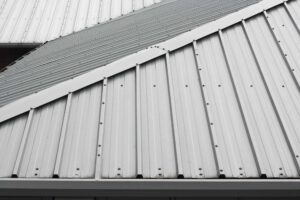Updated on December 29, 2023
Choosing the Right Commercial Roofing Material
If you own a commercial building, choosing the right roofing material can have an impact on your property’s value. It also impacts how long it will last and whether you’ll need to make any maintenance repairs.

A variety of commercial roof materials are available to meet a wide range of needs and budgets. Learn about the pros & cons of each one and what to look for when deciding which roofing system is best for your building.
There are many different types of roofs that can be used on commercial buildings. These roofs are meant to protect the building from the elements and provide a safe space for people to work in. They also help to manage water and drainage.
The type of roof that you choose for your business is based on several factors, including the size and design of the property, and its intended use. In addition to protecting the property, a good roofing system is able to manage heat and cold, reduce energy consumption, and extend the life of the roof.
A flat roof is the most common type of roof used on commercial properties. However, these roofs must have a slight slope in order to allow for proper drainage. If not, it would be impossible to prevent and remove water and debris from building up on the roof.
Metal roofing is a great choice for businesses looking to improve their commercial property’s appearance and increase its durability. They are available in a variety of styles and colors, and are easy to install and maintain.
These roofs can be constructed using a single-ply membrane or a combination of two sheets. They can be ballasted, mechanically fastened or chemically adhered to insulation, creating a waterproof layer that provides a barrier against the elements.
Another popular type of flat roof is the thermoplastic polyolefin (TPO) membrane. These roofs are durable, resistant to damage from the sun’s rays, and they can last for decades.
Alternatively, you can choose to go with a built-up roof, or BUR for short. This is a traditional roofing system that has been around for more than a century and offers a wide range of benefits.
This roof has a few different variations, but the most common are standing seam and twin skin. Both types use concealed fasteners and are ideal for both curved and straight roofs.
A green roof is one of the most environmentally friendly options for commercial properties and buildings. They are not only beautiful to look at but also offer a host of other advantages, including reducing heating and cooling costs, providing energy conservation, and protecting the environment.
Commercial roofing materials come in a variety of styles and types to suit the needs of individual building projects. Whether your building is new or old, the right type of roof can protect your investment and make it more comfortable for your employees and customers.
Thermoplastic polyolefin (TPO) and EPDM membranes are among the most popular commercial roofing materials today. They are known for their durability, energy efficiency, and fire resistance.
TPO is a single-ply roofing material that is commonly used on low slope roofs. It can be installed using mechanical fasteners, adhesives, or ballasts and comes in a variety of colors.
It has a lifespan of more than 25 years and is a cost-effective option for commercial buildings. Furthermore, it’s also resistant to fire and hail damage.
Depending on your budget and the climate where you live, metal roofing can be a good choice for your commercial building. It’s fire-resistant, withstands extreme weather conditions, and can be custom-designed to fit the style of your building.
In addition, it can mimic the look of traditional roofing materials like shingles and slates. This gives you the opportunity to incorporate different design elements into your building’s architecture without compromising on its long-term performance and durability.

